In Conversation with an Atypical Watchmaker, Fred Dingemans of d.m.h.
How being fired, old lathes and sheer conviction conspired to make a successful, independent watchmaker.
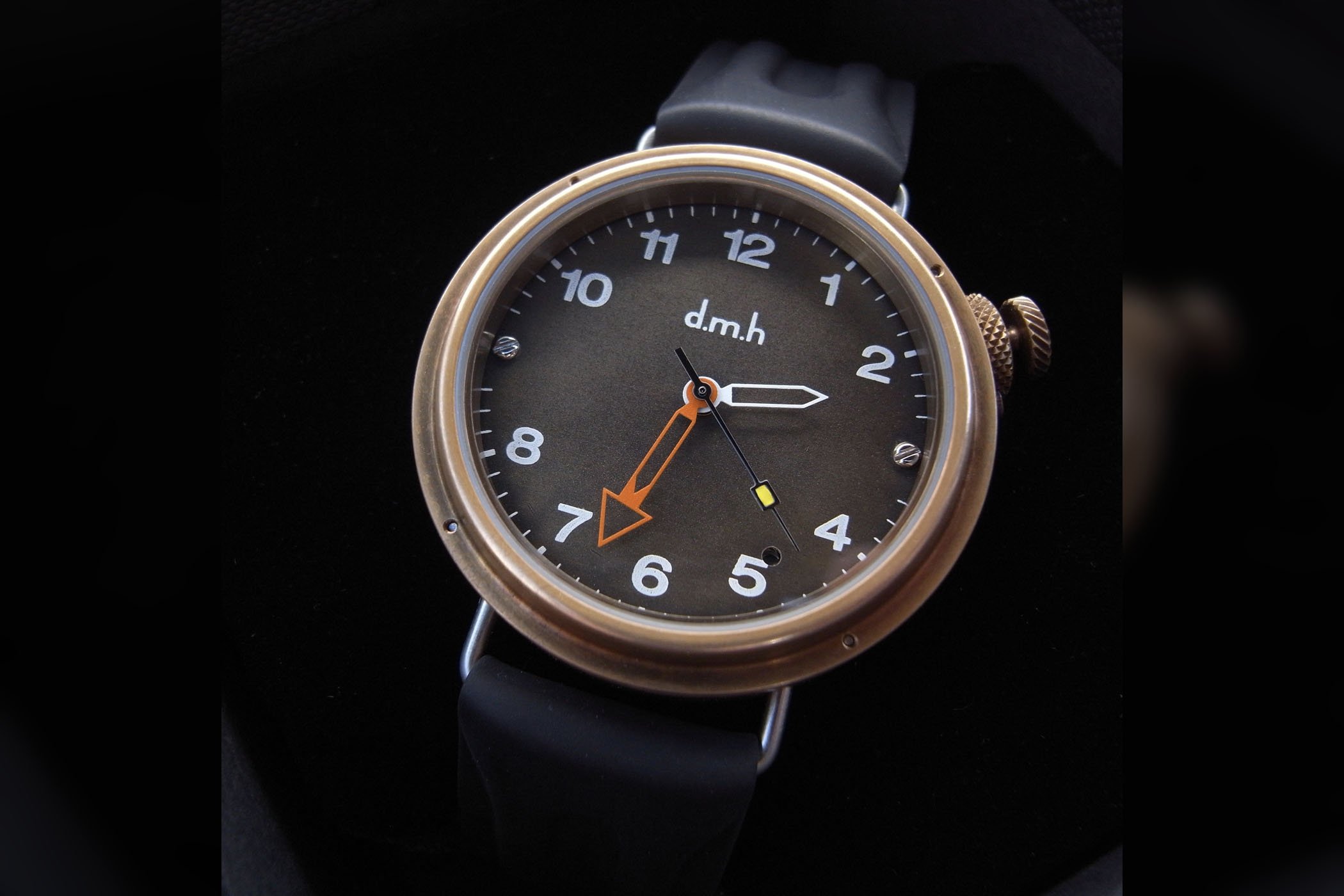
Independent Dutch watchmaker Fred Dingemans (b.1961) is something of an anomaly in the rarefied universe of watchmaking: he didn’t study watchmaking and he makes his watches by hand in his garden shed using pre-electronic machinery (a lathe, a drilling machine-cum-press and an engraving machine) he inherited from his job in precision mechanics. Embracing the DIY school of philosophy, Dingemans produces roughly 20 watches a year. The case, crown mechanism and dial are all crafted by Dingemans although the movements are 1970s new old stock Tenor Dorley jumping hours and 3-hand automatics. His distinctive solid steel or bronze cases with the crown at 2 o’clock are made on the old 1947 lathe. Customisation is very much a part of the package and Dingeman’s sends photographs of the work in progress from the moment work on the parts gets started.
Dingeman’s combination of low volume and absolute dedication is something he wouldn’t change for anything in the world. We caught up with Dingemans and his one-man-show the other day and found out how being fired from his 9-5 job was a blessing in disguise.
Rebecca Doulton, MONOCHROME – We’ll start with the classic background questions. What exactly are fine mechanics, what was your job in fine mechanics and how did this lead you to watchmaking?
Fred Dingemans – Fine mechanics is like mechanics but on a smaller scale, you deal with smaller components. Back in 1979, there weren’t a lot of job opportunities for youngsters in Holland. Without pronouncing a single word, my father let me know that I could forget any ideas I had of not working because the job market was depressed. So I went to work in the same company as my father. It was the pre-electronics period and I repaired mechanical things like typewriters and counting machines with small tools. Later on, I sometimes adjusted and rebuilt machines for disabled people; for example, adjusting a typewriter for somebody with Parkinson’s disease. I enjoyed solving things and thinking of mechanical solutions to adapt the machine to specific requirements.
I’ve always loved mechanical watches. I’d look at them in shops but always thought, better not buy that because that would trigger an argument with my wife. I wasn’t really making the kind of money to pay for a high-end watch and you have to make choices. Anyway, what gave me the push was when the company I worked for went bankrupt. It was a 130-year-old company and had rested on its laurels and didn’t embrace the advent of computers and technology. I was 45 when I was told I could go home. For most people, being fired is the worst thing that can happen to you; for me, it was the best thing that ever happened to me.
How did you transition from fine mechanics to watchmaking?
When the director kindly fired me, she told me I could take some machinery I wanted from the company. So I loaded the company car with a couple of machines that had symbolic value for me. My father was the head of the technical department of this company and used to take me with him to work on Saturday mornings. It was the mid-1960s and even then, as a small boy, I was in awe of the machines. So I took home a lathe and some other machines and set myself up in the garden shed. Funnily enough, the first thing I made was a tamper to stamp the coffee for the espresso machine. This was, if you like, my pre-watch period!
I didn’t want to borrow money from the banks so, about 12-15 years ago, I started making my watches with the machinery I had. I started small and made A LOT of mistakes, but that is the interesting part of the process. My father died before he could see what I was doing, so in a way, this is also a kind of homage to him.
I got a part-time job for three days of the week and spent the rest making watches. I contacted watch enthusiasts to let them know about my project. In fact, one of the first ones was Frank! He wrote something about me and things started to roll…It was slow, but that suits me just fine. I don’t like life in the fast lane.
Were you inspired by any brands/watchmakers in particular?
Not really, no. Not because there aren’t many beautiful watches out there – some of my favourite brands make amazing watches. My first mechanical watch was a pilot’s watch that had a really nice history. I don’t have that kind of history to sell a watch. I tell my customers just like it is: this is who I am, this is how I do things and this is how long it takes.
What’s the difference between your approach to watchmaking and a traditional Swiss watchmaker?
Well, I haven’t got the white lab coat or nice-looking manufacture! I work in my shed. I have no overhead and need just one heater in the winter. I was curious to see how far I could get with the minimal amount of materials from watch companies. For example, I am not able to make a movement, that’s not fine mechanics, that’s out of this world mechanics! I sourced the movements, the glass and the straps, the rest I made myself. I don’t use expensive CNC machines either and rely on my lathe and drilling machines. I have learned the shortcomings of my lathe and drill and how to work around them. When you know the shortcomings of something, you can do a better job. It’s all about finding solutions. When I come across a problem, my brain works better…
Why is the crown at 2 o’clock and what kind of customisation options do you offer?
I like big crowns and when it’s big and at 3 o’clock, it usually digs into your wrist. If a customer prefers, I can put the crown at 10 o’clock, but only for a 3-hander. The dial is where the most customisation options reside: from the colour, the material, the finishings (engraved, sandblasted, painted) to different shapes for the hands, different colours, textures etc. I use two movements setups, jumping hours and 3-handers, although sometimes, in the Fusion Hour model, I adapt minute tube and have a minute and seconds hand along with the jumping hour.
I know some people say “wow, two years to get a watch” is a long time. But that’s how I work. Every customer gets pictures during the process. Here I am on the lathe, drilling a hole, engraving the metal… customers and especially myself enjoy this, it’s like live coverage of the work I do for you. As long it is in my ability I have to do my best to fulfil the wishes of my customers. We have established a relationship of trust and this makes me do my best.
Are you adamant about sticking to 20 watches per year?
Yes. The downfall is that I earn less, but I have more time to do other worthwhile things… something other than accumulating debt. Life is too short for that. You see, watchmaking is a part of my life and my day is built around making a watch, but also having time to do other things I like. From my father’s passing at 60, I learned that later is now. I don’t need to make a lot of money to enjoy my life.
What have you learned in these past 12 or so years?
That life can take you to places that you wouldn’t have envisioned in your wildest dreams. In the beginning, I was plagued with doubts. There are so many watch brands out there and they make such beautiful watches and they do it so much better than me… But these thoughts tend to drown you and don’t get you anywhere. I learned that when you are honest about what you do and make a product that you like… well, you can be successful.
Is there any experience you would not repeat?
No, there is no experience I wouldn’t repeat. Learn from mistakes, learn from the process. In retrospect, everything that goes wrong in creative processes must have a reason and you have to learn from this. When you make a mistake, it’s how you respond that reveals a great deal about who you are. I never react immediately, I sleep on it and the next day I usually have come up with a solution.
Is there a historical character you would like to share a beer with?
Somebody like Jimi Hendrix in music and Churchill in politics. I’m sure Churchill didn’t do everything right, But he was a remarkable person that was in the right place at the right time.
In my free time, I play electric guitar (for instance a Fender Stratocaster, like Hendrix, although my ability is nowhere near). I’ve always had a problem with the guitar staying in tune after using the whammy bar, you know the thing that makes the guitar whine. Well, I’ve invented something to replace the conventional string tree/guide that gives B and E strings a prefered angle over the top nut. (Editor’s note: you can see Dingeman’s Dynaguide invention here).
 As a man with a mechanical mind, which is your favourite machine?
That’s an easy question: English machinery. I have an old Triumph Bonneville, a motorcycle from the heydays of English motor making. They really made the most beautiful things. We also drive a Triumph TR4A from the mid-1960s. I restored it mechanically but it still has the original red (now chalk-like) paint. We love to drive it and go on holiday with a little tent on the back rack. People think we’re crazy, aren’t you scared to travel in such an old car? Of course not, if it breaks, I have parts and I can fix it, if not it can be brought home and we move on with a rental car. I believe in using things, not locking them up in a garage for a sunny Sunday drive. Things are to be used and enjoyed. Just like watches. In the past 25 years, I have had three watches, only one was bought, the other two I made myself, a stainless some 10 years ago and a bronze recently.
In the past, watchmakers could order parts easily and these parts were often interchangeable with other brands. There was another concept of service back then. These days, that is no longer the case. Watches have become luxury items, not pragmatic items. I admire the old way of thinking. Utensils had to reliable and repairable by men’s hands.
More details about Fred Dingemans and d.m.h. here.

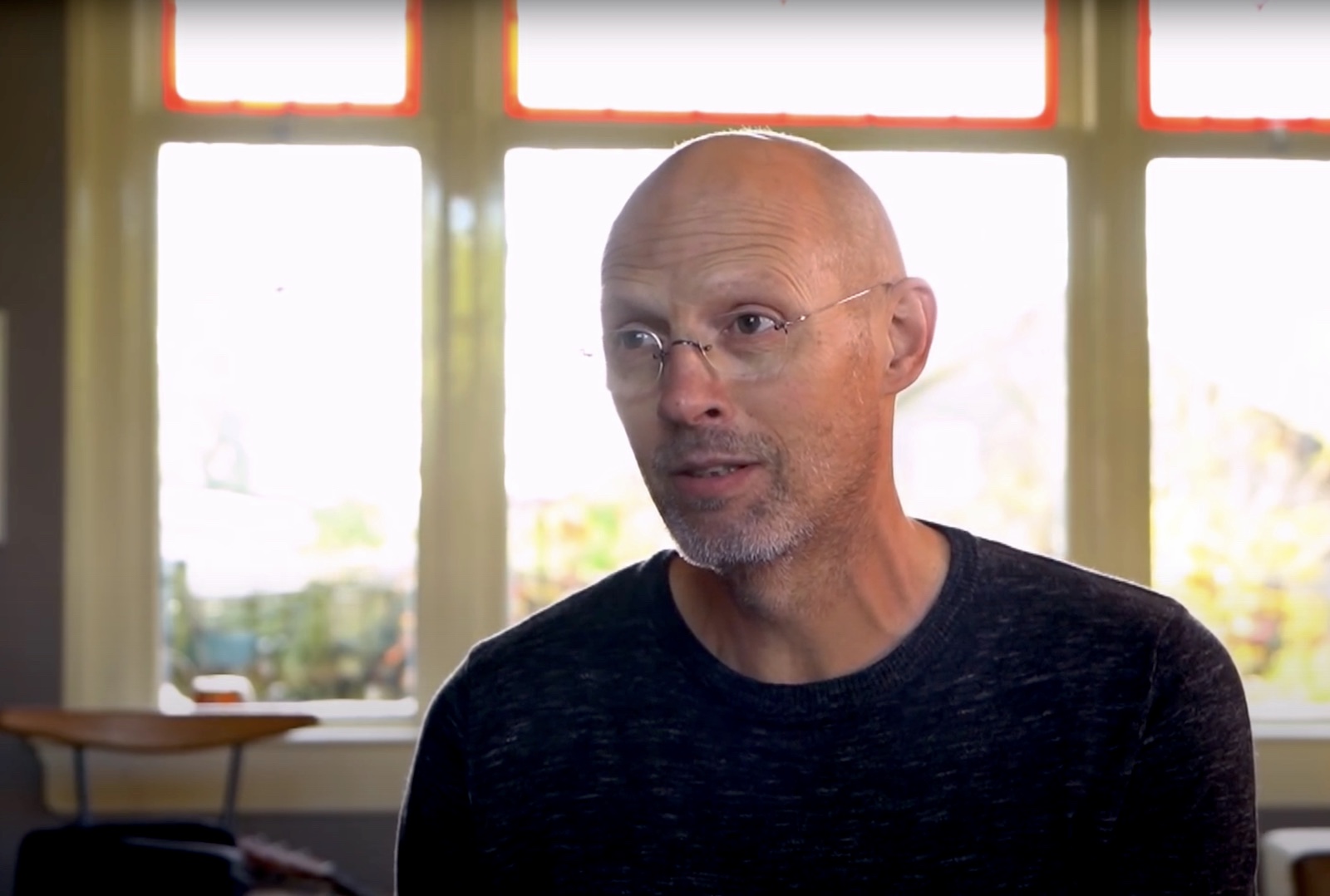
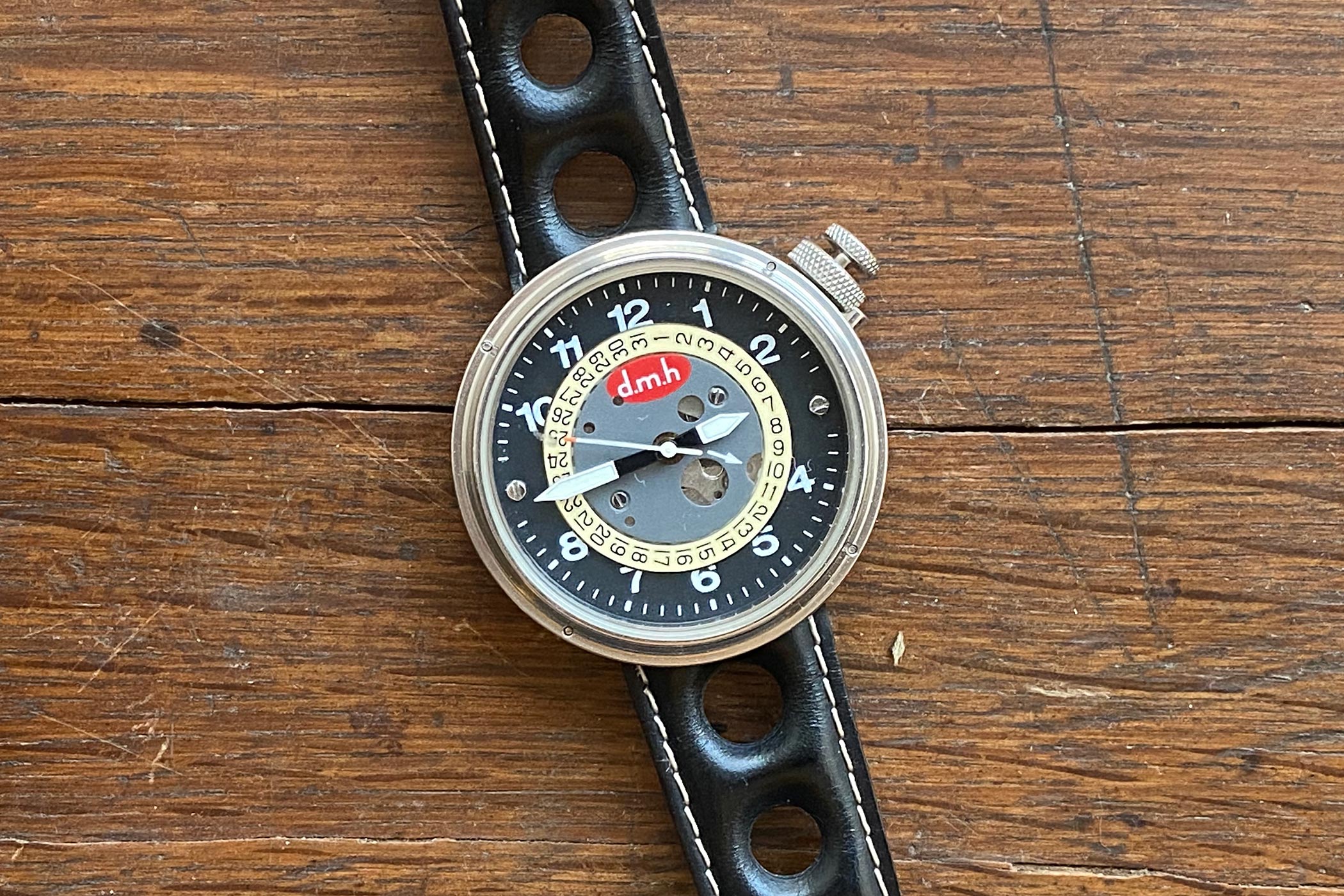
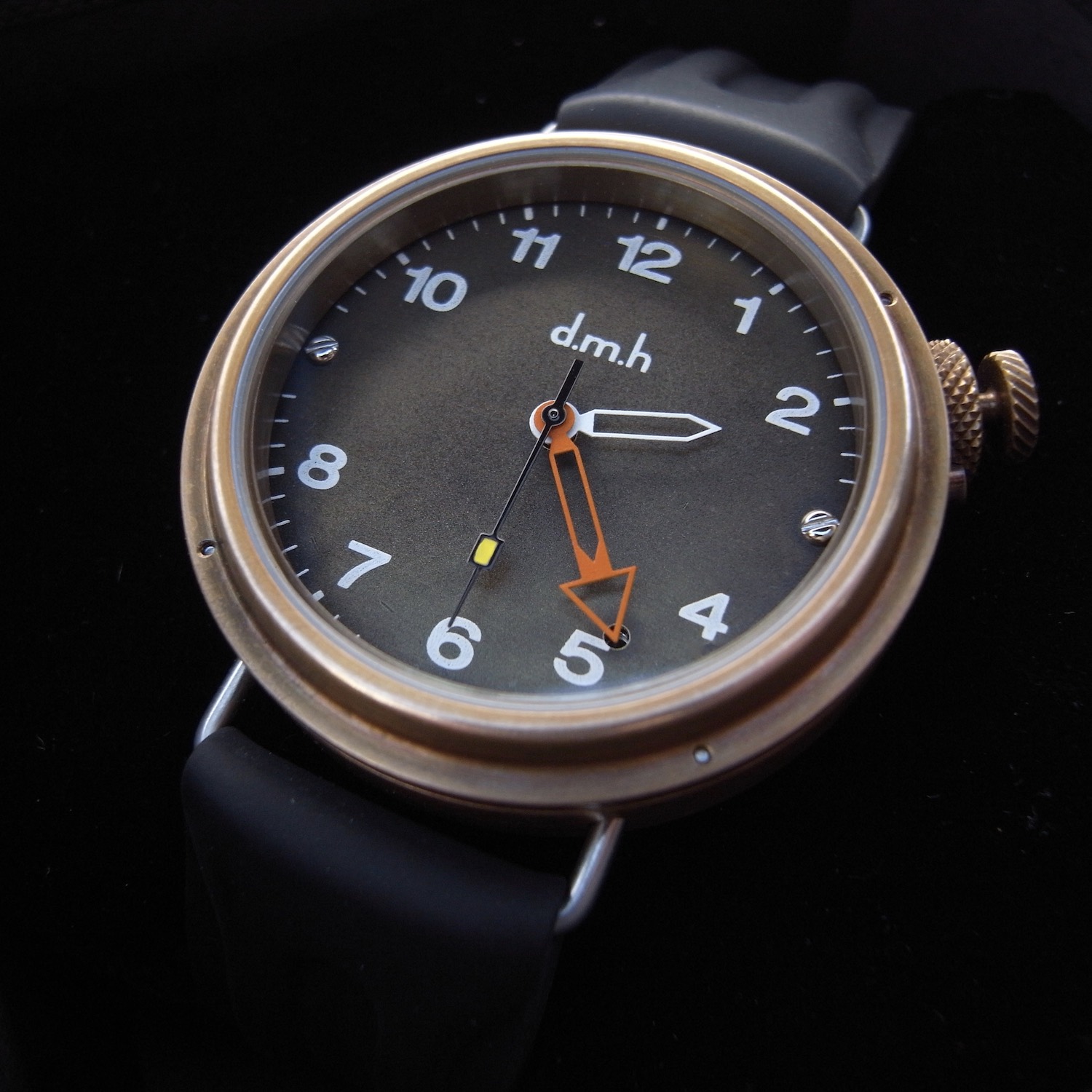
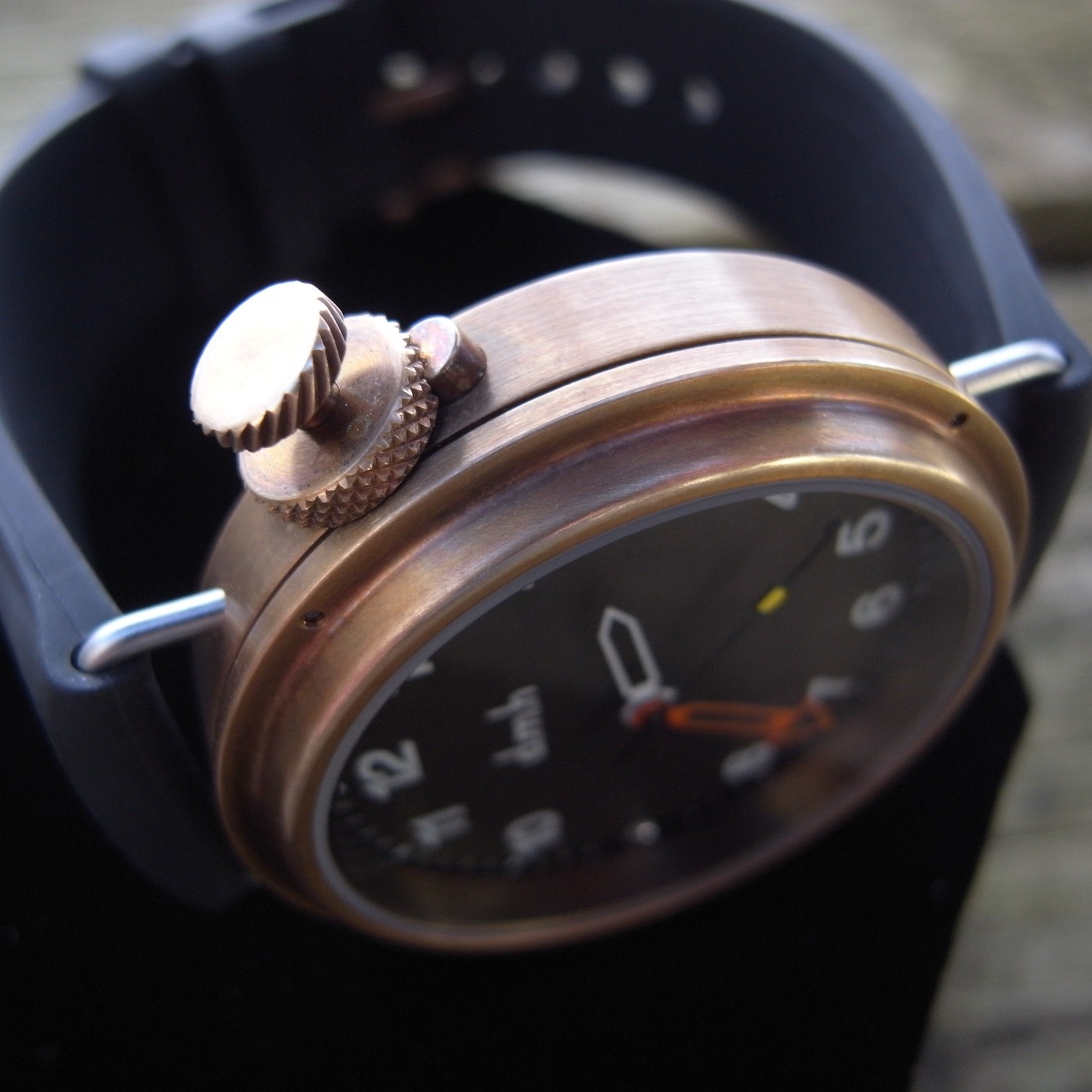
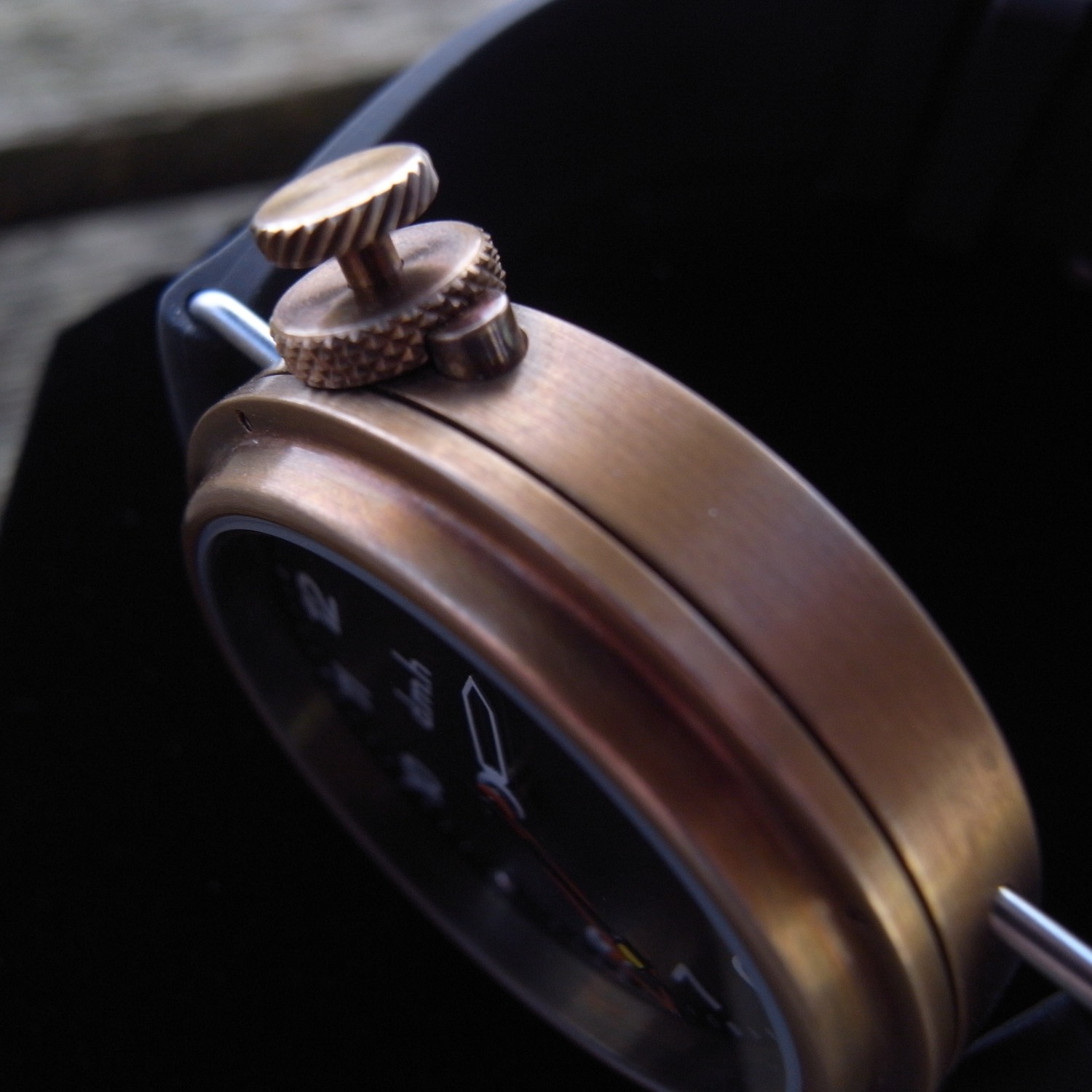
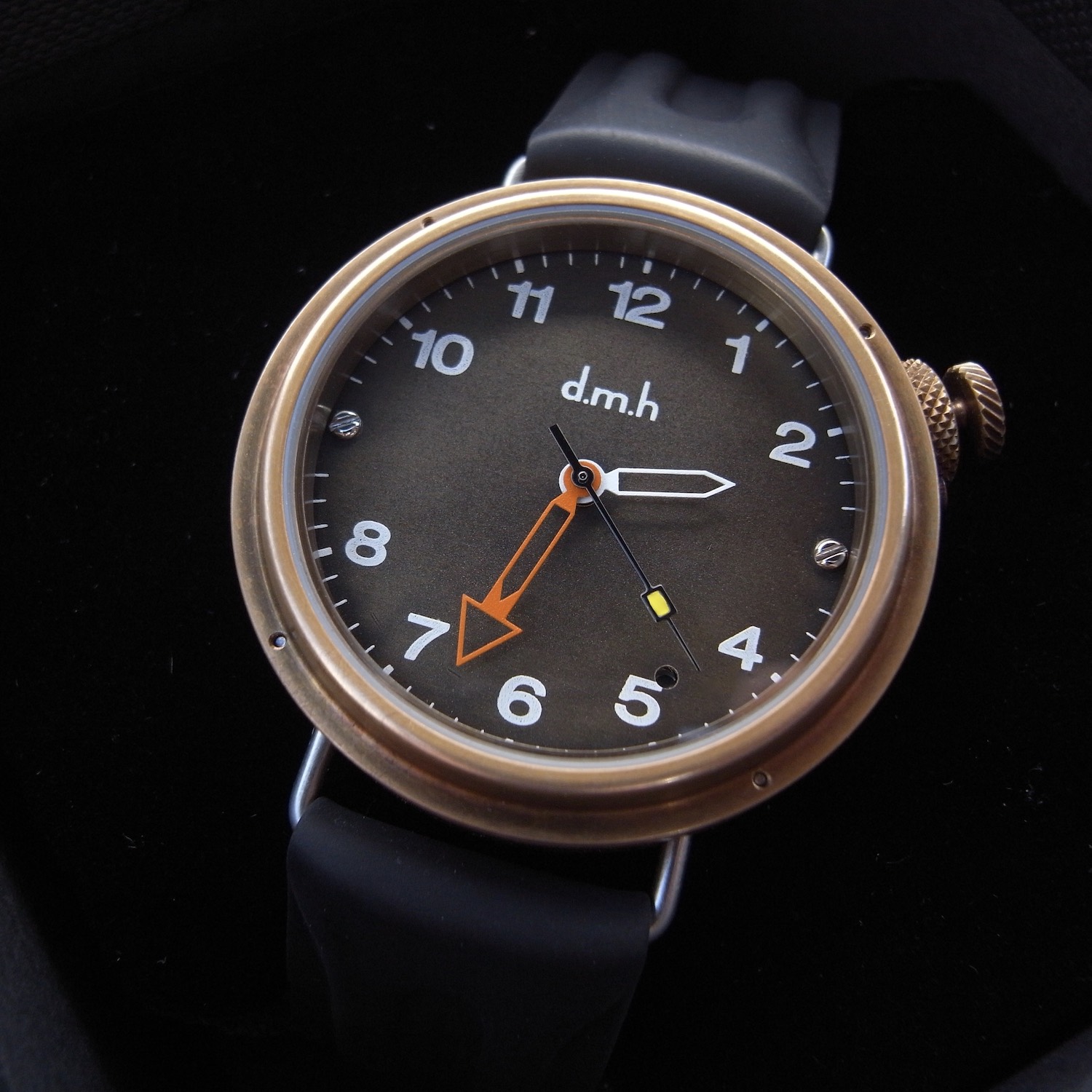
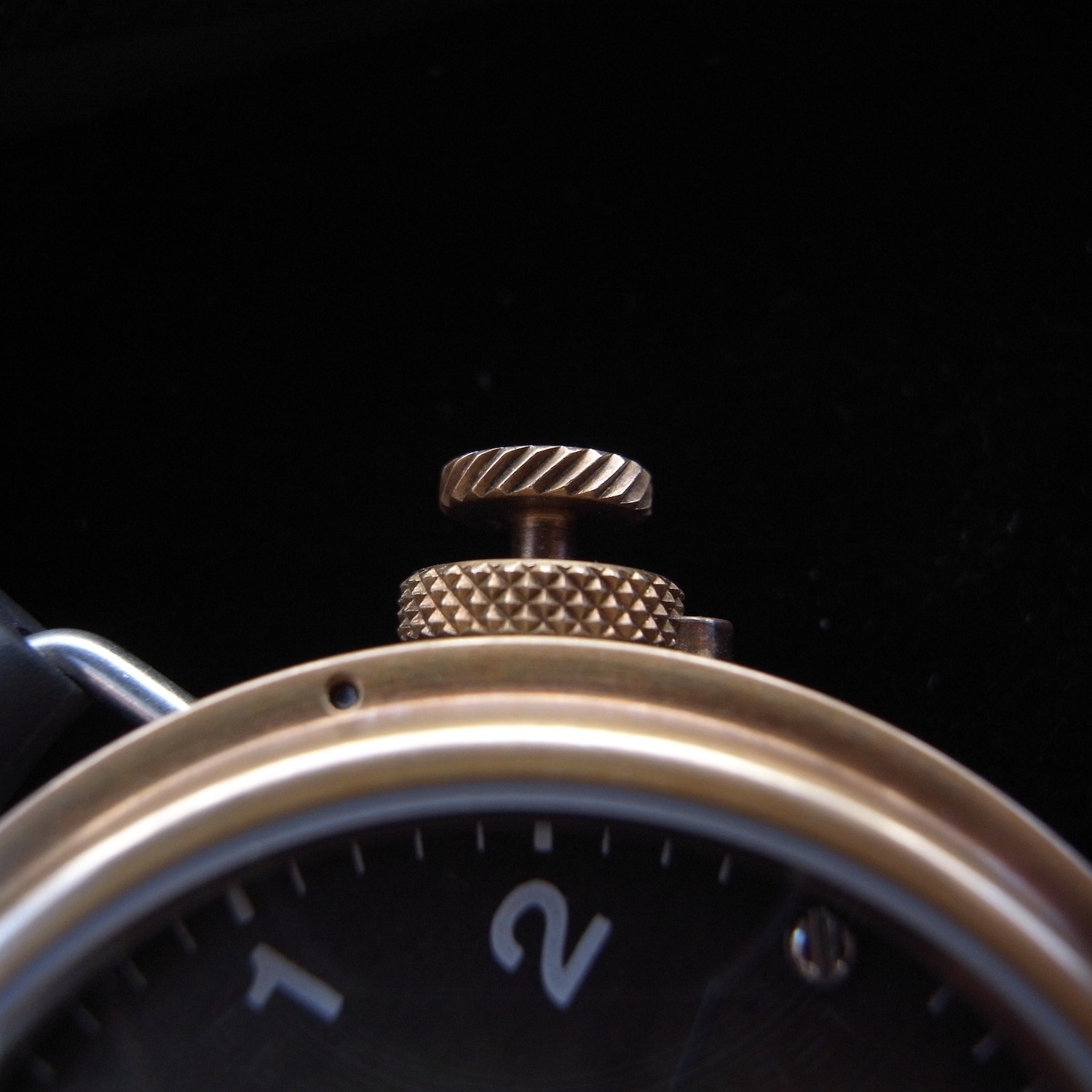
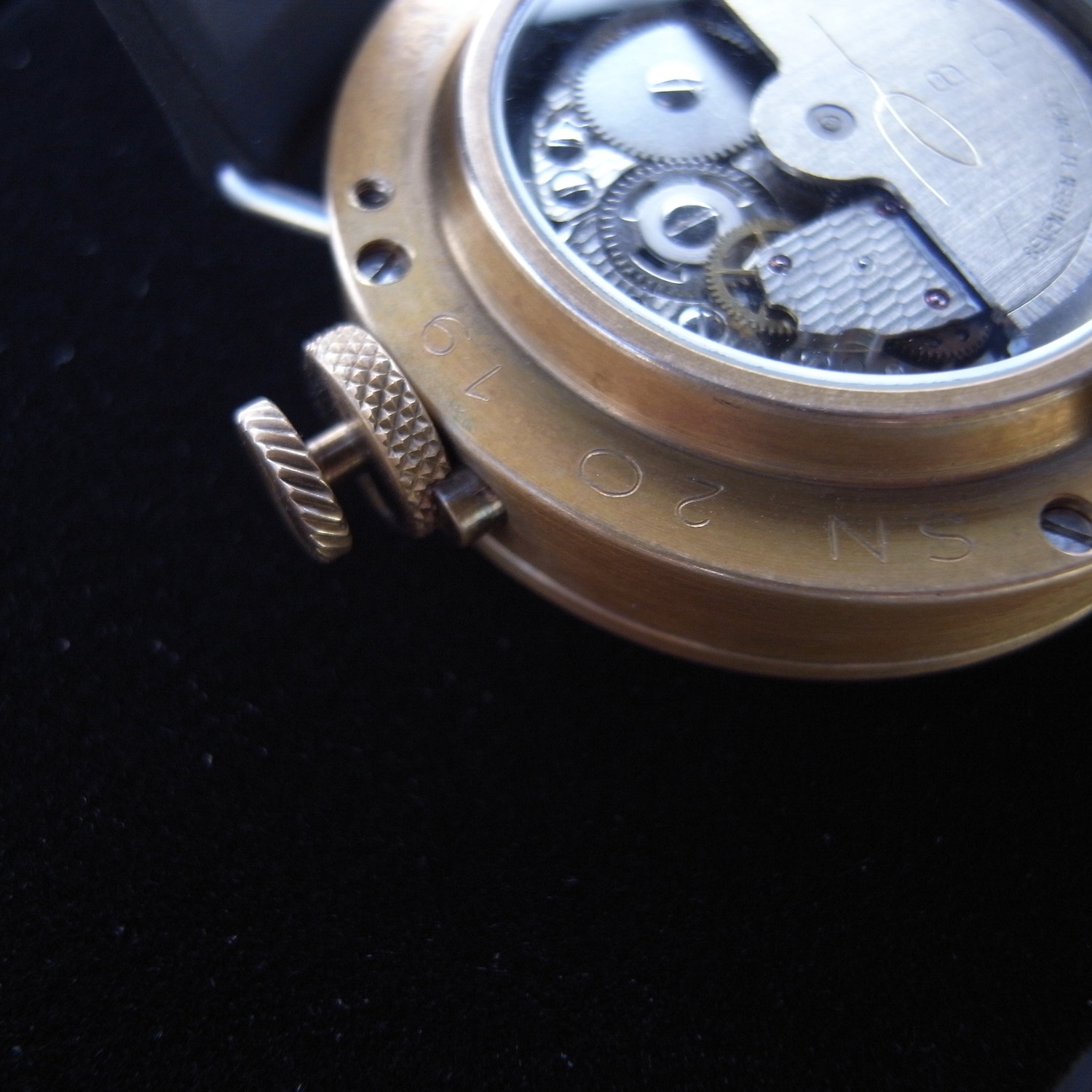
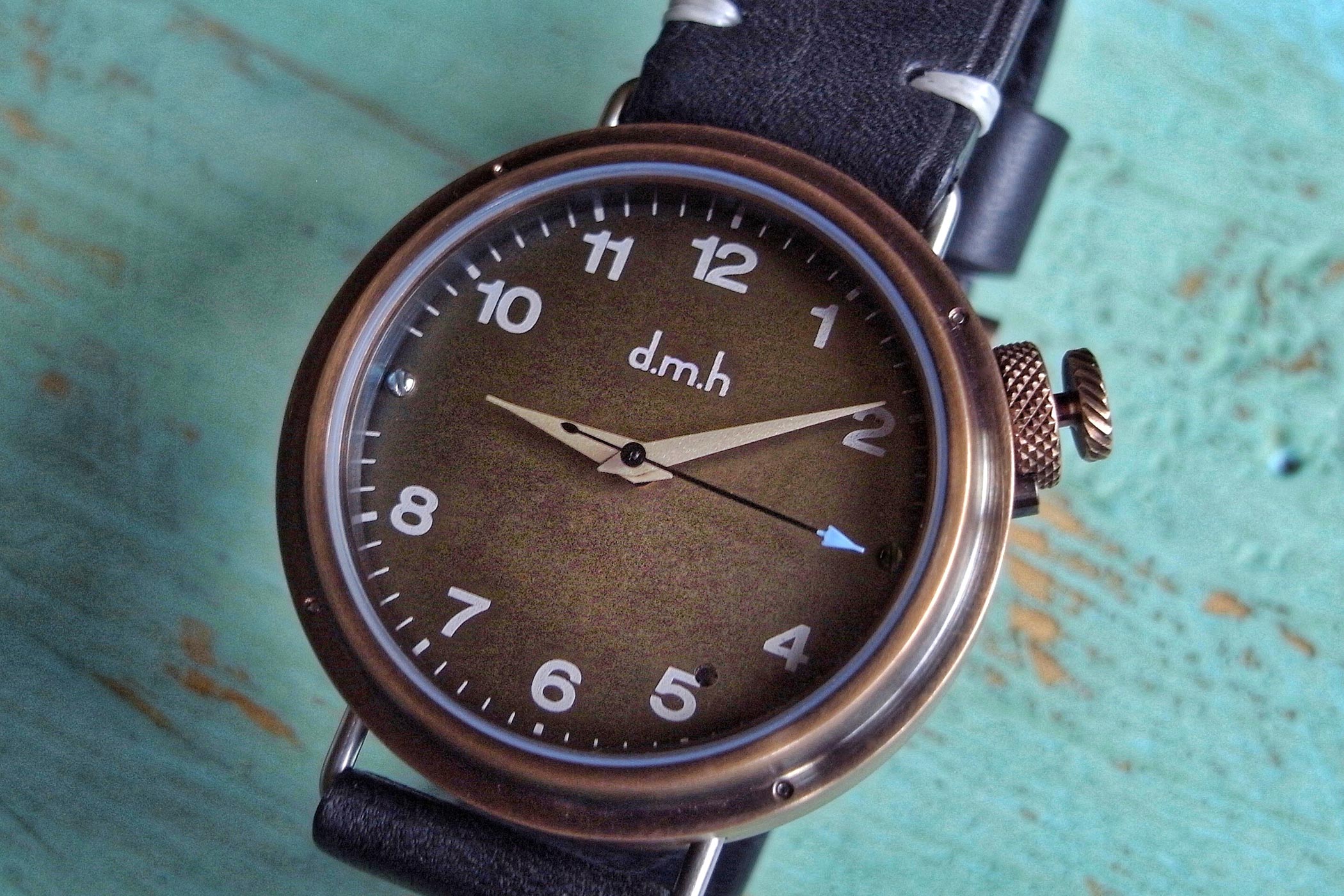
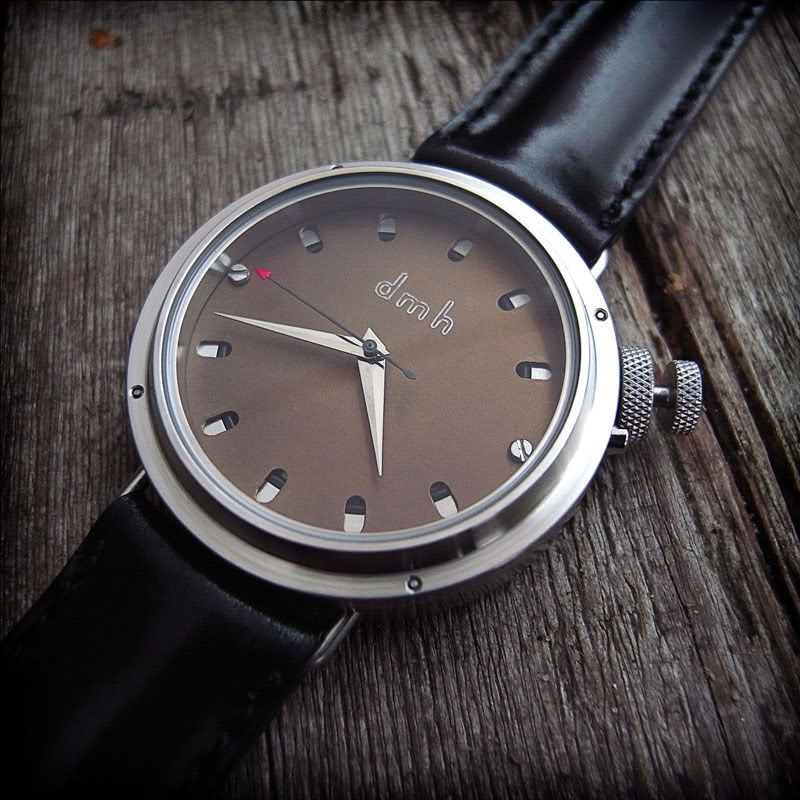
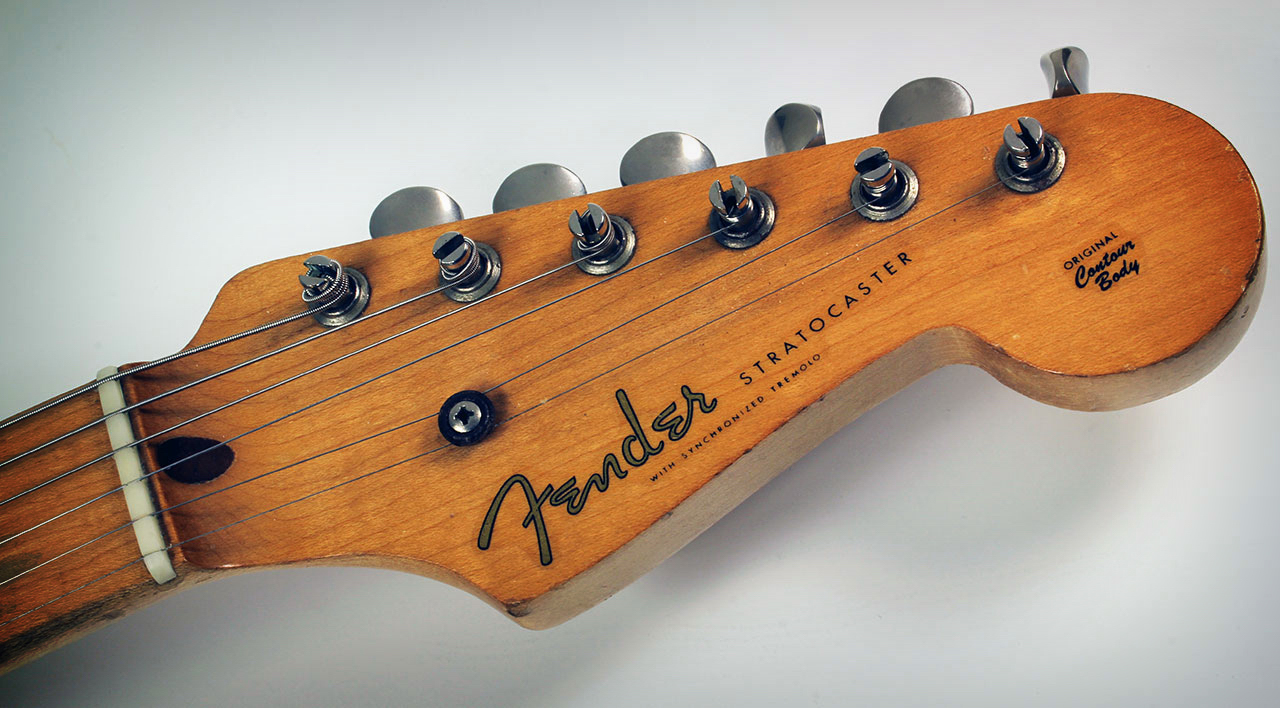
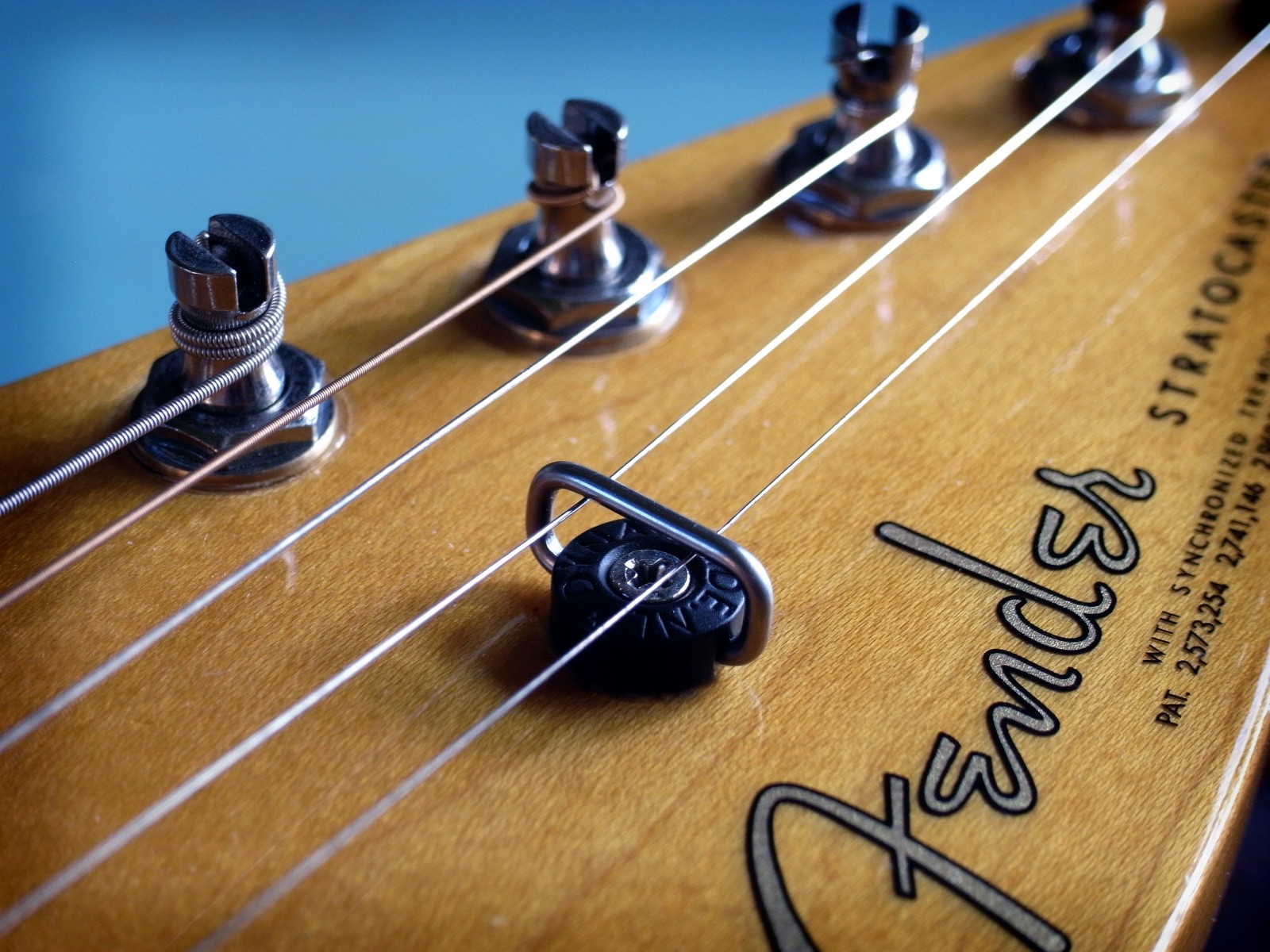

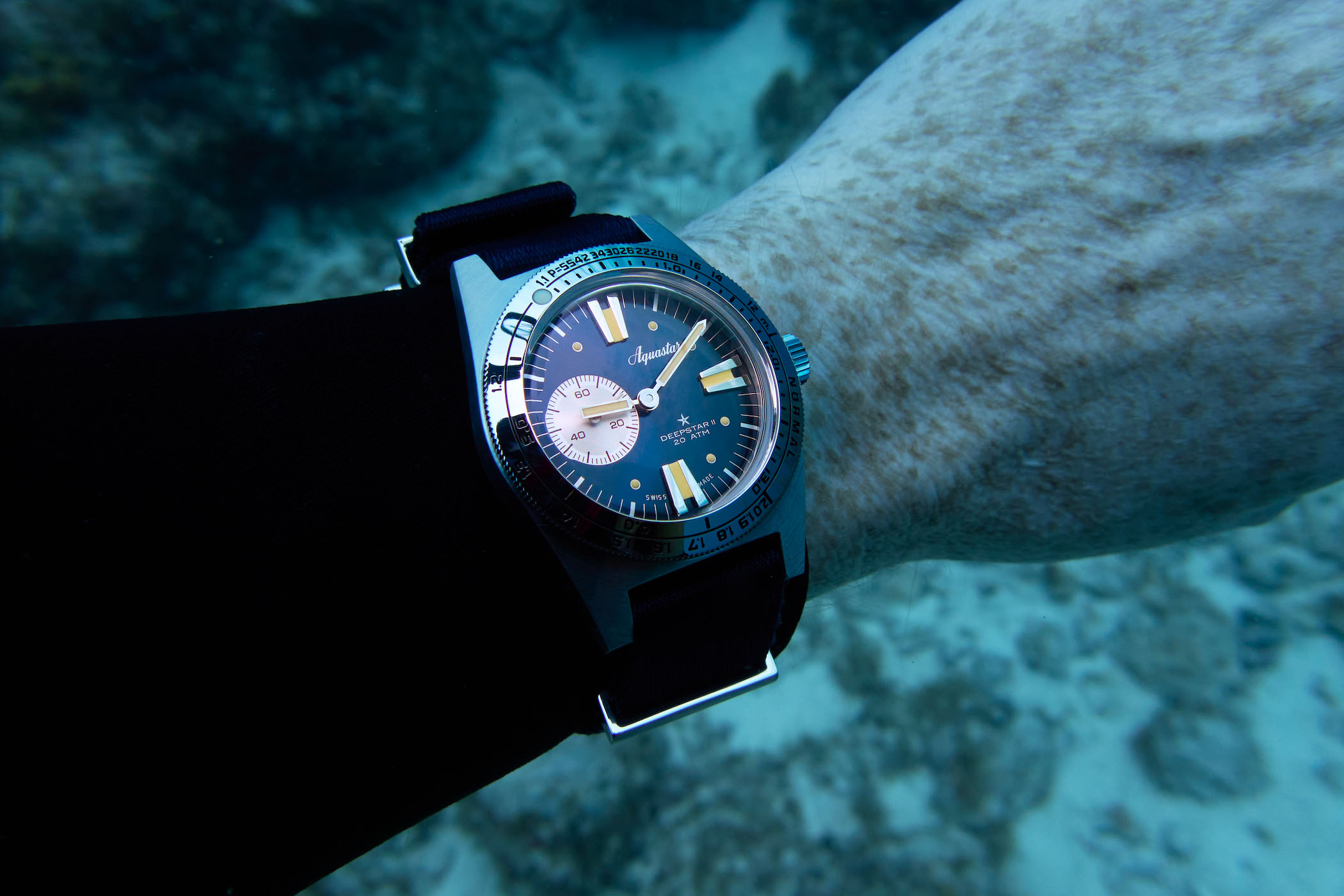
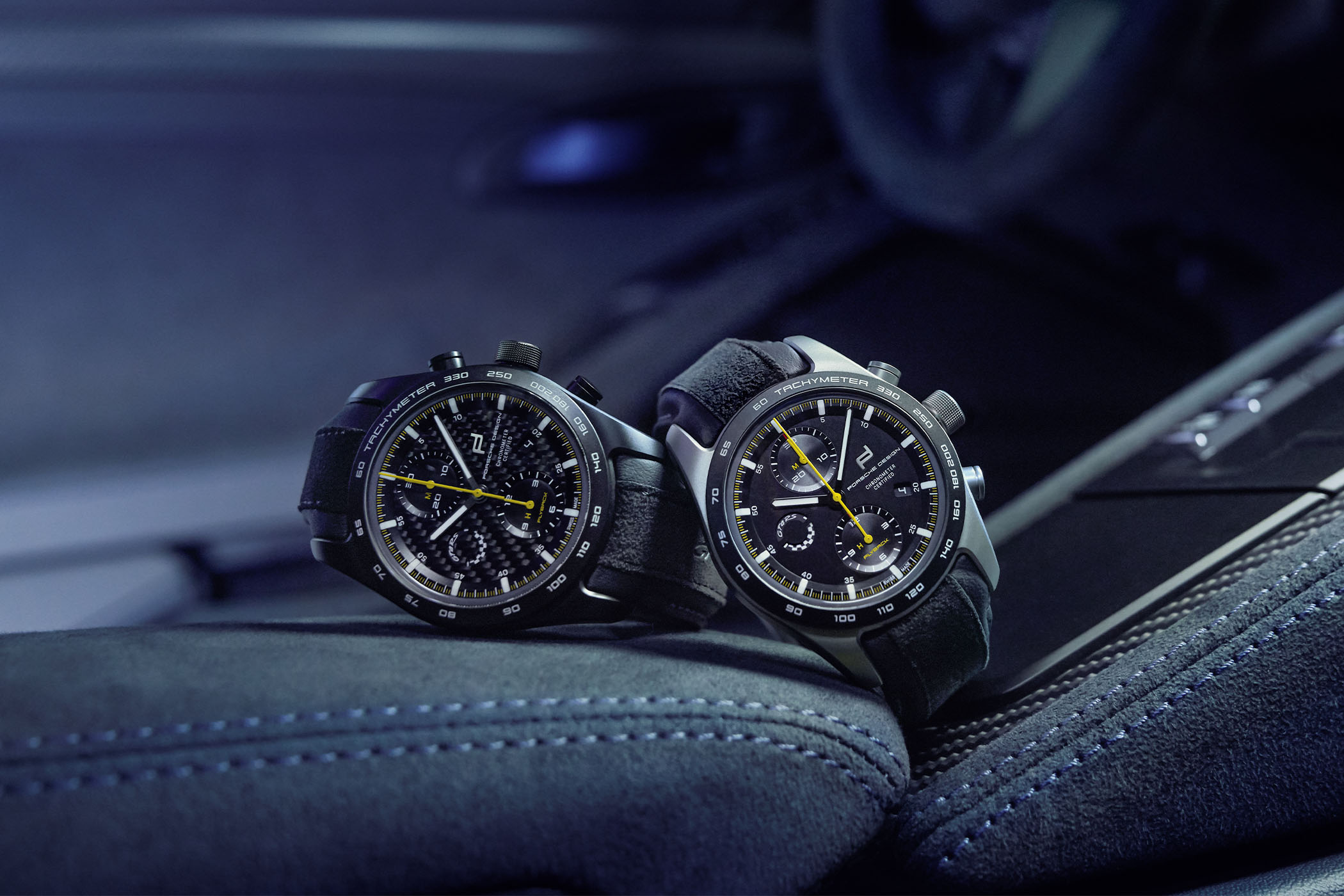
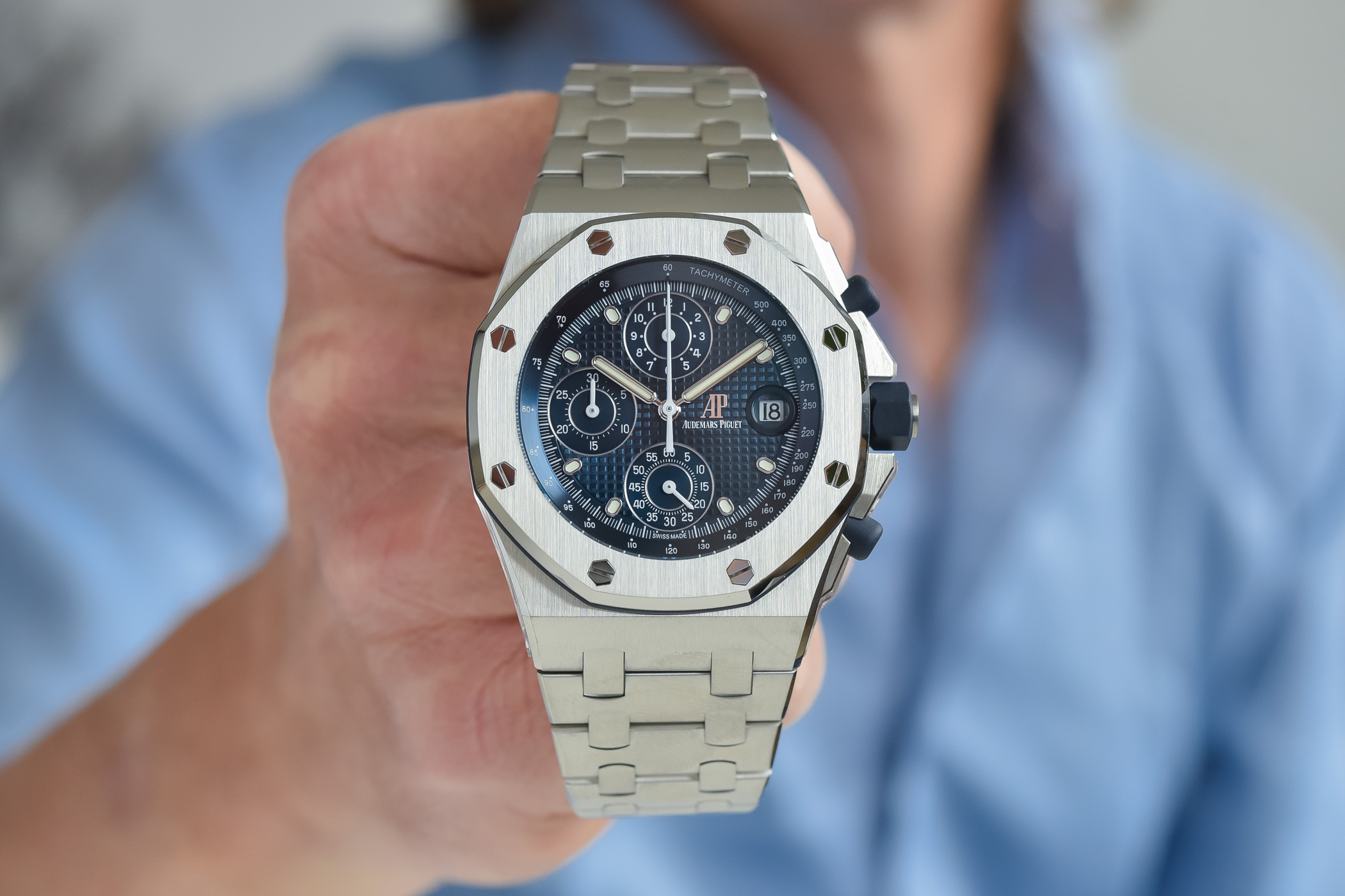
2 responses
Just shows where you can go with determination AND skill. A good idea to put the crown out of the way . Seiko 5s have been doing it for years and it works well. I would find one of these much easier to live with than some of the more elaborate offerings from the “haute horology” brands.
So glad to see this interview! I have one of his jump hour watches. Went through the waiting period and design for it with him years and years ago. Such a fan of his work and I absolutely love the watch!